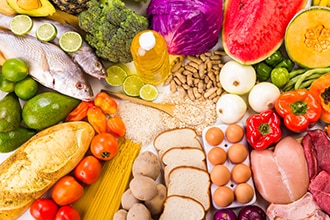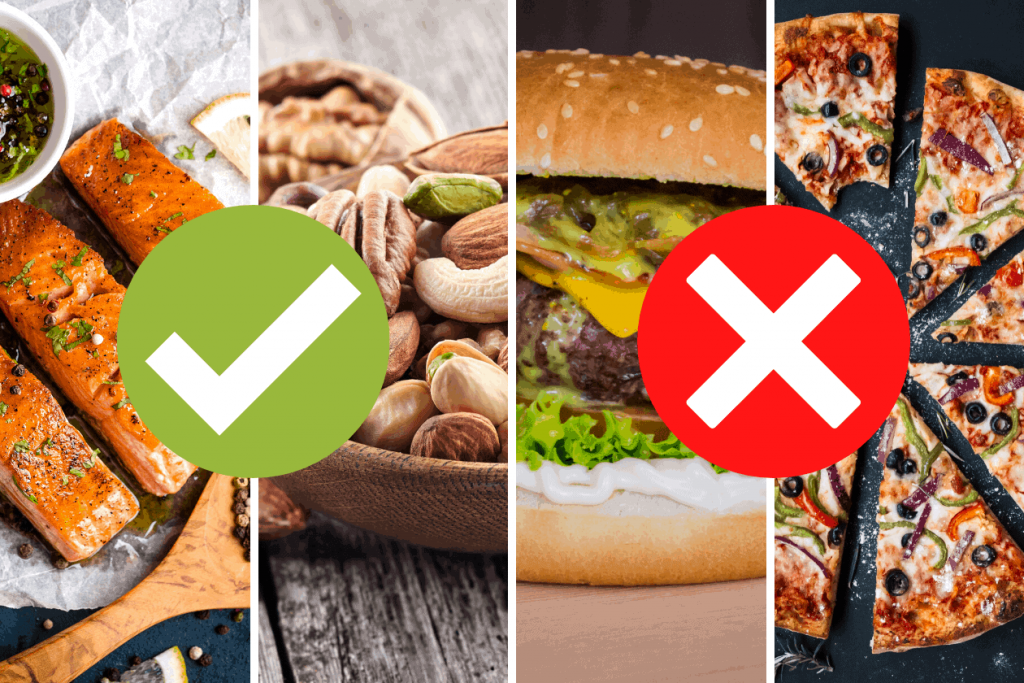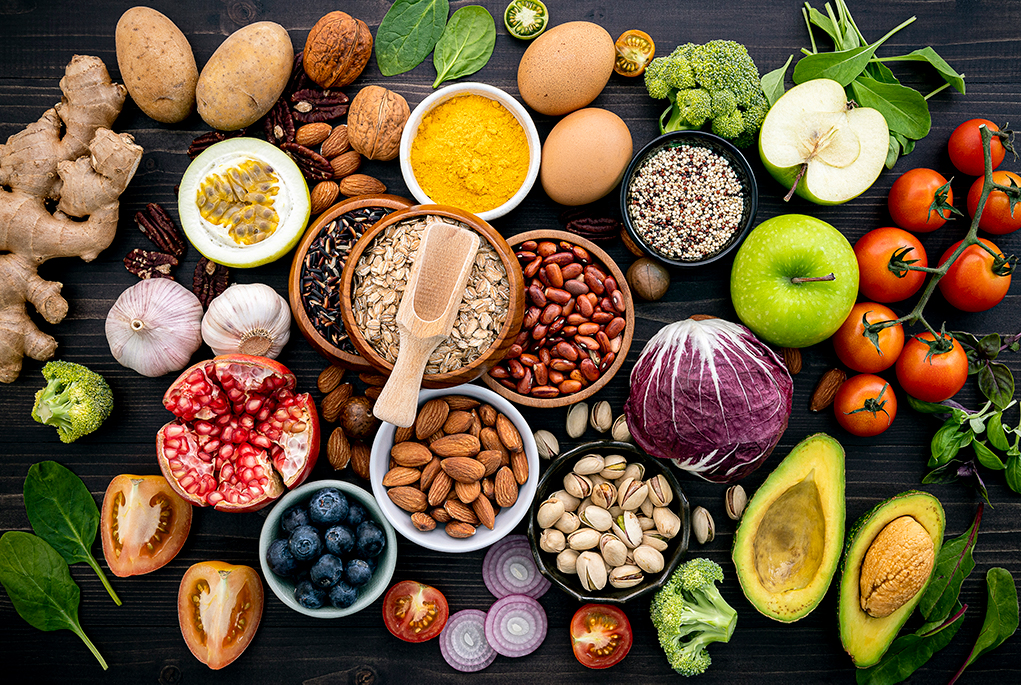
You can do many things in order to keep your diet full and healthy. However, you might not know that there are many healthy options. Calories aren't everything but they are essential. The nutritional value and quality of the food is what is most important. You can also replace processed foods with whole-grain alternatives to make some lifestyle changes. Here are some top options. A variety of foods is better than eating one.
Avoid sugary snacks and drinks. Added sugar and fat are bad for your health. Most store-bought muffins contain little more than a muffin shell. Don't eat "healthy" frozen dinners. They are loaded with sugar and preservatives. The majority of fat-free, gluten-free desserts lack nutrients. Most so-called health foods are filled with artificial junk. Bananas and mangos, which are high in natural fiber, are great sources.
When choosing healthy foods, look for those with less fat, sugar,, and more. These nutrients are unhealthy. It is better to avoid them than to overeat them. If you're looking to indulge in a delicious treat, opt for the healthier option. Organic and free range are two of the best options. If in doubt, talk to your doctor. It's simple to change to a healthier diet. It doesn't have to be hard, it just requires a little effort and research.

You should eat a variety healthy foods in your daily diet. Get more fruits and vegetables in your diet. They're better for you in the long run. You don't have to be a calorie-monster in order to reap the health benefits of healthy food. There are many ways to eat more of these healthy options without feeling hungry. Finding a balance between healthy and unhealthy foods will ultimately help you lose weight and stay healthy.
Fast-food chains often claim to be health-conscious, but they shouldn't be confused with the words "healthy" on their packaging. Even "healthy" foods contain sugar substitutes that can actually increase caloric intake and increase the risk of diabetes. Healthy eating habits encourage people to avoid unhealthy foods and instead eat whole foods. There are many options to make your diet more healthy. All you have to do is make healthier choices.
Another example of a fake health food is plant-based foods. They're not real meats. These foods are manufactured to look like actual meat and contain high levels of sodium and fat. These foods are not good choices for your diet. In order to avoid the potential dangers of these foods, you should stick to whole, nutrient-dense foods. It's important to make sure you have the right balance of healthy and unhealthy foods in your diet.
Raw or organic food is a better option if you are looking for something more natural. These foods have low fat and are high in antioxidants. They're also rich in vitamins C and A. They are also low in calories so they are a great choice for people with diabetes. For the best results, follow the recommendations of your doctor. These foods are the most nutritious foods for your body. They'll be helpful in keeping your blood sugar levels normal.

Some yogurts that are more popular tend to be less healthy. These yogurts are often flavored with high levels of sugar. There are low-fat yogurts that contain only 15 grams of sugar per portion. However, this is not a huge amount of sugar. Purchase the unsweetened option to get low fat milk. Non-fat frozen yogurt can be substituted for ice cream.
While you should avoid high-fat foods, you should not ignore the fact that they are also rich in fiber and vitamins. Look for bars with at minimum three grams of proteins and sugar. You want a healthy energy bar that has minimal ingredients and contains less than 10g sugar. This will help you lose weight and improve your overall health. You'll be grateful later!
FAQ
Get immune enhancement with herbs and supplements
Herbs and natural remedies can be used to boost immune function. Examples include ginger, garlic and oregano oils, echinacea, vitamin C, ginkgo loba, and echinacea.
These herbal remedies are not meant to replace medical treatment. They may cause side effects such as nausea, diarrhea, stomach cramps, headaches, dizziness, and allergic reactions.
What can I do to lower my blood pressure?
You must first determine the cause of high blood pressure. Next, take steps that will reduce the risk. This could mean eating less salt, losing some weight, taking medication, and so on.
Also, make sure to get enough exercise. Walking is a great alternative if you don't have the time or energy to exercise regularly.
If you're not happy with how much exercise you're doing, then you should consider joining a gym. You will probably join a gym where you can meet other people with similar goals. It's much easier to follow a routine if someone is with you at the gym.
How can you tell what is good?
You have to listen to what your body says. Your body knows what you need when it comes time to eat, exercise, and get enough rest. Your body will tell you what to do so that you don't go overboard. Take care of your body and make sure that you're staying healthy.
How can I get enough vitamins?
You can get most of the daily nutrients you need through your diet. However, if you are deficient in any particular vitamin, taking supplements can help. You can purchase a multivitamin that includes all of the vitamins you need. You can also get individual vitamins from your local pharmacy.
Talk to your doctor to find out which foods are rich in vitamins. Dark green leafy vegetables like spinach, broccoli and kale, as well as turnip greens and mustard greens such as turnip and mustard greens and bok choy, are rich in vitamins K & E.
If you are not sure how much vitamin you should be consuming, ask your doctor. Your medical history and current health will help you determine the best dosage.
What is the best way to live a healthy lifestyle?
Healthy lifestyles include eating healthy food, regular exercise, good sleep, and avoiding stress. You will live a long and happy life if you adhere to these guidelines.
Starting small can make a big difference in your diet, and even your exercise routine. If you're looking to lose weight, walk for 30 minutes each morning. You can also take up dancing or swimming if you are looking to be more active. An online fitness program such as Strava or Fitbit that tracks your activity could be a good option.
Statistics
- In both adults and children, the intake of free sugars should be reduced to less than 10% of total energy intake. (who.int)
- This article received 11 testimonials and 86% of readers who voted found it helpful, earning it our reader-approved status. (wikihow.com)
- The Dietary Guidelines for Americans recommend keeping added sugar intake below 10% of your daily calorie intake, while the World Health Organization recommends slashing added sugars to 5% or less of your daily calories for optimal health (59Trusted (healthline.com)
- WHO recommends reducing saturated fats to less than 10% of total energy intake; reducing trans-fats to less than 1% of total energy intake; and replacing both saturated fats and trans-fats to unsaturated fats. (who.int)
External Links
How To
What does the term "vitamins" mean?
Vitamins are organic compounds naturally found in food. Vitamins help us absorb nutrients from foods we eat. Vitamins are not made by the body, so they must be obtained through food.
Two types of vitamins exist: water-soluble vitamin and fat-soluble vitamin. Water-soluble vitamins dissolve in water easily. You can find vitamin C,B1 or thiamine, B2 or riboflavin and B3 or niacin, B3/niacin, B6/pyridoxine, folic Acid, biotin and pantothenic Acid as examples. Fat-soluble vitamins can be stored in the liver or in fatty tissue. Vitamin D, E, K and A are some examples.
Vitamins can be classified according to biological activity. There are eight major vitamin groups:
-
A – Essential for normal growth, and the maintenance of good health.
-
C - vital for proper nerve function, and energy production.
-
D - necessary for healthy bones and teeth.
-
E is required for good vision and reproduction.
-
K - Required for healthy nerves and muscles.
-
P - vital for building strong bones andteeth.
-
Q - aids digestion, absorption and absorption iron
-
R – Required for the formation of red blood vessels.
The recommended daily allowance (RDA) of vitamins varies depending on age, gender, and physical condition. RDA values are set by the U.S. Food and Drug Administration (FDA).
For example, the RDA for vitamin A is 400 micrograms per dayfor adults 19 years or older. Pregnant women require 600 micrograms daily to support fetal development. Children ages 1-8 require 900 micrograms per day. Babies under one-year old require 700 mg per day. Between 9 and 12 years of age, however, this drops to 500 mg per day.
Children aged 1-18 years need 800 micrograms daily, while children overweight require 1000 micrograms per days. Children who are severely obese or underweight will need 1200 micrograms each day.
2200 mg of vitamin A per day is required for children aged 4-8 who have been diagnosed by anemia.
2000 micrograms daily is required for adults over 50 to maintain their general health. Due to their increased nutrient needs, pregnant and breastfeeding women need 3000 micrograms daily.
Adults over 70 years of age need 1500 micrograms per day since they lose about 10% of their muscle mass each decade.
Women who are pregnant or nursing need more than the RDA. Pregnant woman need 4000 micrograms daily in pregnancy, and 2500 per day after childbirth. Breastfeeding mothers need to consume 5000 micrograms every day when breastmilk has been produced.